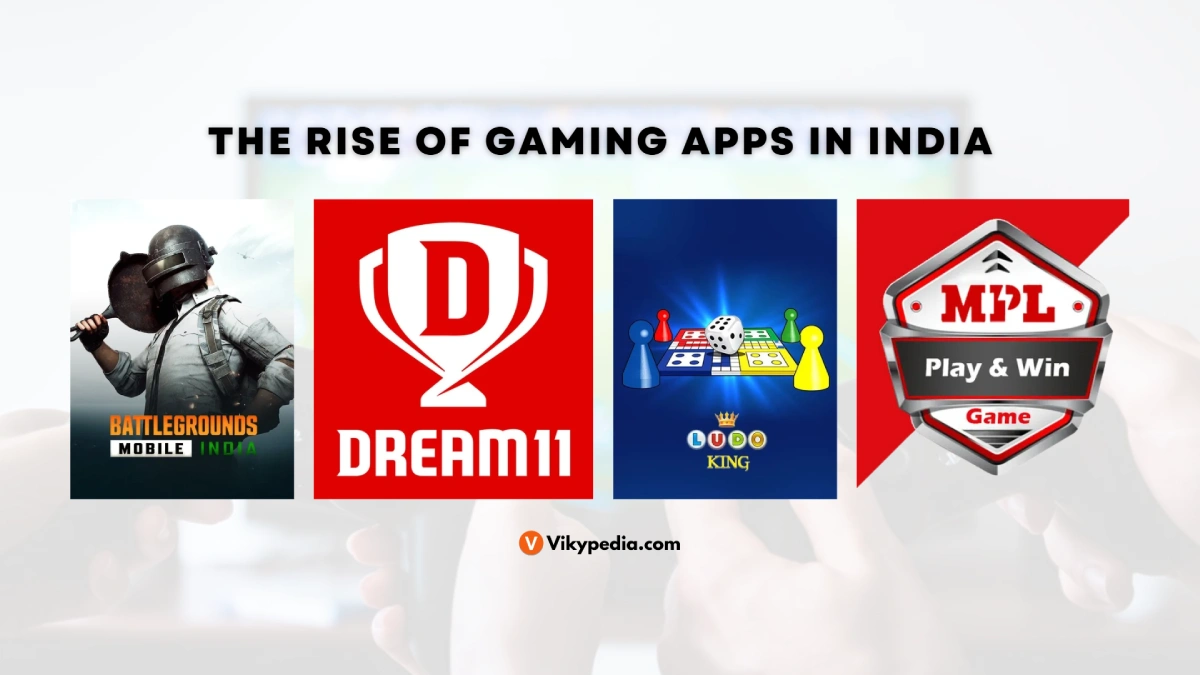Executive Summary
Over the past decade, India has experienced a dramatic transformation in the mobile gaming landscape. With a combination of demographic factors, technological advancements, and a surge in smartphone and internet penetration, mobile gaming has become one of the most vibrant and fast-growing sectors in the Indian entertainment industry. This case study explores the factors contributing to the rise of gaming apps in India, examines the major players in the market, and highlights the challenges and opportunities within this evolving industry.
Introduction
India has long been known as a hub for mobile phone users, and with over 600 million smartphone users and a rapidly growing internet user base, it is no surprise that mobile gaming has become one of the country’s most lucrative sectors. The rise of gaming apps, from casual games to eSports, has transformed the Indian gaming ecosystem into a multi-billion-dollar industry, attracting both local and global players.
Gaming in India, which was once seen as a niche hobby, is now a mainstream form of entertainment, especially among younger demographics. As of 2023, India has emerged as one of the largest mobile gaming markets in the world, with an estimated 400 million gamers, and this number is expected to grow substantially in the coming years.
Market Drivers
Several key factors have contributed to the meteoric rise of gaming apps in India:
- Smartphone and Internet Penetration:
- Smartphone Growth:India has witnessed exponential growth in smartphone ownership, with over 600 million smartphones in circulation as of 2023. Affordable smartphones, especially in the sub-₹10,000 category, have allowed a broader demographic, including middle and lower-income groups, to access mobile games.
- Internet Connectivity:The introduction of affordable 4G and now 5G networks has significantly improved mobile internet speeds and accessibility. With data tariffs being among the lowest in the world, this has made mobile gaming more accessible to millions across the country.
- Digital Payments and Monetization Models:
- The rise of digital payment systems such as UPI (Unified Payments Interface), Paytm, Google Pay, and others has enabled easy in-app purchases, making it simpler for gamers to pay for in-game purchases or subscriptions. Freemium models, where games are free to play but offer in-app purchases, have become a dominant revenue generation model.
- Changing Demographics and Gaming Culture:
- This demographic is tech-savvy, spends a significant amount of time online, and is particularly engaged with mobile games. According to a 2023 report, nearly 75% of mobile gamers in India are under the age of 35.
- Localized Content and Language Support:
- Game developers and publishers have recognized the importance of localization in a country as diverse as India. Offering games in regional languages, such as Hindi, Tamil, Telugu, Bengali, and others, has been crucial in engaging a larger audience. Localization of both language and content has allowed developers to reach untapped markets.
Key Players in the Market
India’s gaming app market is populated by both homegrown companies and international players. Some of the notable players include:
- PUBG Mobile (Battlegrounds Mobile India):
Launched in 2020 by Krafton, PUBG Mobile became a sensation in India before being banned by the Indian government in September 2020. In response to the ban, Krafton launched Battlegrounds Mobile India (BGMI), a localized version of the game, which quickly regained popularity.
- Dream11:
Dream11 is one of India’s most successful homegrown gaming apps. Founded in 2008, it revolutionized fantasy sports in India by allowing users to create fantasy teams for cricket, football, and other sports. It capitalized on the cricket frenzy in India, especially around events like the Indian Premier League (IPL), attracting millions of active users.
- MPL (Mobile Premier League):
MPL is another prominent Indian gaming platform that offers a wide variety of casual and competitive games. With a wide range of games, from casual titles to strategy games, MPL has been successful in attracting millions of users, particularly those looking for gaming and earning opportunities.
- Ludo King:
- A cultural touchstone, Ludo King saw massive success due to its simplicity and nostalgic appeal. The game surged in popularity during the COVID-19 lockdown, as people sought ways to stay connected with friends and family. Ludo King capitalized on both casual gameplay and multiplayer features.
Challenges
Despite steady growth, the mobile gaming industry faces several challenges in the Indian subcontinent:
- Regulatory Uncertainty:
- The Indian government has imposed bans on several popular gaming apps, including PUBG Mobile and Free Fire, due to concerns over data privacy and national security. Regulatory challenges continue to pose a risk to developers and investors.
- Digital Literacy:
- Although smartphone penetration is high, a significant portion of the population, especially in rural areas, still lacks the necessary digital literacy to fully engage with advanced gaming apps.
- Data Privacy and Security:
- With gaming apps collecting large amounts of personal data, there are concerns regarding the safety and security of users’ information. This has led to stricter regulations for data protection.
The Future of Gaming Apps in India
The future of gaming apps in India is incredibly bright. With a growing, young, and tech-savvy population, increasing internet penetration, and continuous advancements in mobile technology, India is poised to become one of the largest and most dynamic gaming markets in the world.
Key trends like the rise of eSports, cloud gaming, and the integration of AR/VR and AI will redefine the gaming experience, while increased investment in the sector and government support will further fuel growth. However, regulatory challenges and concerns about gaming addiction will need to be addressed for the industry to thrive in a sustainable way.
As mobile gaming becomes even more integrated into India’s entertainment ecosystem, it will offer new opportunities for innovation, job creation, and global collaboration—cementing its position as one of the most exciting and influential industries in India’s digital future.

















